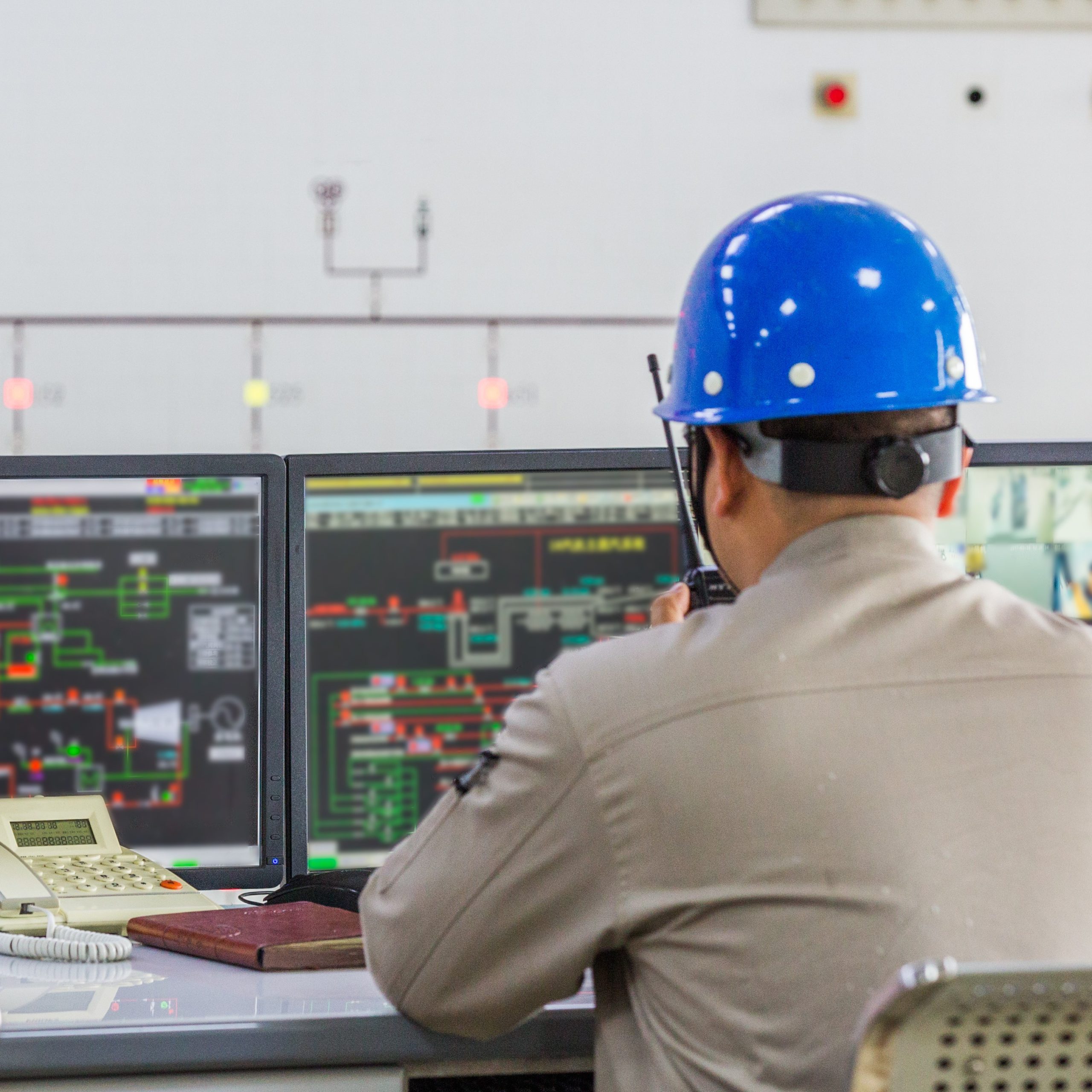In the intricate ballet of machinery and operations, where every cog and lever must perform in perfect harmony, the role of preventive maintenance emerges as the unsung hero, ensuring that the dance continues without a hitch. Imagine a world where equipment failures are not just inconvenient disruptions but costly setbacks that ripple through production lines, affecting delivery schedules and bottom lines. Here, in this delicate balance, enters the Computerized Maintenance Management System (CMMS) – a digital maestro orchestrating the symphony of preventive care. This article delves into the profound significance of CMMS in preventive maintenance, illustrating how this technology not only anticipates the needs of machinery but also fortifies the backbone of industrial efficiency.
Maximizing Efficiency: How CMMS Transforms Preventive Maintenance
In the world of industrial automation, the implementation of a Computerized Maintenance Management System (CMMS) can be a game-changer for preventive maintenance strategies. Imagine a scenario where maintenance tasks are meticulously planned, ensuring that no machine is left unchecked and no part is left to deteriorate. A CMMS not only schedules these tasks but also keeps a detailed record of all maintenance activities. This systematic approach minimizes unexpected downtimes and extends the lifespan of machinery. With features like automated reminders, inventory management, and detailed reporting, a CMMS ensures that your maintenance team is always ahead of potential issues, transforming chaos into a well-orchestrated symphony of efficiency.
Furthermore, a CMMS facilitates data-driven decision-making. By analyzing historical maintenance data, it becomes possible to identify patterns and predict future failures. This proactive approach allows for better resource allocation, optimized maintenance schedules, and reduced operational costs. Additionally, the centralized database ensures that all team members have access to up-to-date information, fostering a collaborative environment. The integration of IoT devices and sensors with CMMS adds another layer of precision, enabling real-time monitoring and instant alerts. Ultimately, the adoption of a CMMS in preventive maintenance practices not only boosts productivity but also enhances the reliability and safety of your operations.
The Role of CMMS in Reducing Downtime and Operational Costs
In the realm of preventive maintenance, a Computerized Maintenance Management System (CMMS) emerges as a pivotal tool for optimizing operational efficiency. By automating maintenance schedules and tracking equipment performance in real-time, CMMS minimizes unexpected breakdowns. This not only ensures that machinery is maintained at optimal performance levels but also extends the lifespan of critical assets. The elimination of unplanned downtime translates to significant cost savings, as emergency repairs and production halts become less frequent. Furthermore, the data-driven insights provided by CMMS facilitate informed decision-making, allowing maintenance teams to prioritize tasks based on urgency and impact.
Beyond reducing downtime, CMMS plays a crucial role in cutting operational costs through several key functionalities:
-
- Inventory Management: Efficiently manage spare parts and supplies, reducing the need for excess inventory and minimizing storage costs.
-
- Labor Optimization: Schedule maintenance activities during non-peak hours to avoid disruptions and optimize workforce allocation.
-
- Compliance Tracking: Ensure adherence to industry regulations and standards, avoiding costly penalties and enhancing safety protocols.
-
- Predictive Analytics: Leverage historical data to predict potential failures and address them proactively, preventing expensive repairs.
Incorporating a CMMS into your maintenance strategy not only fosters a culture of proactive maintenance but also aligns with the broader goal of sustainable and cost-effective operations.
Leveraging Data: CMMS for Predictive Insights and Maintenance Planning
In the realm of preventive maintenance, harnessing the power of data is crucial. A Computerized Maintenance Management System (CMMS) plays a pivotal role in this process by providing predictive insights that inform maintenance planning. By analyzing historical data and real-time information, a CMMS helps identify patterns and potential issues before they escalate. This proactive approach extends the lifespan of equipment, reduces downtime, and enhances operational efficiency. Key benefits include:
-
- Improved Asset Management: Track and manage all assets efficiently, ensuring optimal performance and longevity.
-
- Data-Driven Decisions: Utilize historical and real-time data to make informed maintenance decisions.
-
- Resource Optimization: Allocate resources effectively by predicting maintenance needs and scheduling accordingly.
Moreover, a CMMS provides a centralized platform for all maintenance-related activities, fostering better communication and collaboration among teams. Maintenance schedules, work orders, and inventory management are all streamlined, reducing the risk of human error. By leveraging a CMMS, organizations can transition from reactive to proactive maintenance strategies, ultimately saving time and costs. Embrace the power of data and make your maintenance planning smarter and more efficient.
Implementing CMMS: Best Practices for Seamless Integration and Success
When embarking on the journey to integrate a Computerized Maintenance Management System (CMMS) into your operations, it’s crucial to follow best practices to ensure a smooth transition and long-term success. Begin by conducting a comprehensive needs assessment to identify the specific requirements of your organization. This will help in selecting a CMMS that aligns with your operational goals and maintenance strategies. Stakeholder involvement is another key aspect; make sure to engage maintenance teams, IT staff, and management early in the process to gather input and foster a sense of ownership.
Data migration and accuracy play a pivotal role in the successful implementation of a CMMS. Ensure that the data being transferred is clean, accurate, and relevant to avoid any disruptions. Training and support are equally important; provide thorough training sessions for all users to familiarize them with the new system and offer ongoing support to address any issues that may arise. Additionally, regularly review and update the CMMS to adapt to changing maintenance needs and technological advancements. By adhering to these best practices, you can achieve a seamless integration and harness the full potential of your CMMS for effective preventive maintenance.
Q&A
Q: What exactly is a CMMS, and why is it important in preventive maintenance?
A: A CMMS, or Computerized Maintenance Management System, is a software tool designed to streamline and enhance maintenance operations. It serves as a central hub for managing a variety of maintenance activities, including scheduling, tracking, and documenting preventive maintenance tasks. Its importance in preventive maintenance lies in its ability to predict and prevent equipment failures before they occur, thus ensuring that machinery operates efficiently and minimizing unexpected downtime.
Q: How does a CMMS actually help in scheduling preventive maintenance tasks?
A: A CMMS automates the scheduling of preventive maintenance tasks based on predefined intervals, such as time-based schedules (daily, weekly, monthly) or usage-based schedules (after a certain number of operating hours or production cycles). By doing so, it ensures that maintenance activities are performed consistently and on time, reducing the risk of equipment failures and extending the lifespan of assets.
Q: Can a CMMS improve the accuracy of maintenance records?
A: Absolutely. A CMMS maintains detailed records of all maintenance activities, including work orders, inspection results, and parts used. This accurate and comprehensive documentation helps maintenance teams track the history of each asset, identify patterns or recurring issues, and make informed decisions about future maintenance needs. It also aids in regulatory compliance by providing a clear audit trail.
Q: What role does a CMMS play in inventory management for preventive maintenance?
A: A CMMS helps manage spare parts and maintenance supplies by tracking inventory levels, usage rates, and reorder points. This ensures that necessary components are always available when needed, preventing delays in maintenance activities. Efficient inventory management also reduces the risk of overstocking or stockouts, optimizing storage space and reducing costs.
Q: How does a CMMS contribute to cost savings in preventive maintenance?
A: By facilitating timely and effective preventive maintenance, a CMMS helps avoid costly breakdowns and emergency repairs. It also optimizes resource allocation, ensuring that maintenance personnel and materials are used efficiently. Additionally, the improved asset reliability and longevity resulting from regular preventive maintenance can lead to significant cost savings over time.
Q: Can a CMMS be integrated with other systems within an organization?
A: Yes, a CMMS can often be integrated with other enterprise systems, such as ERP (Enterprise Resource Planning) and SCADA (Supervisory Control and Data Acquisition) systems. This integration enables seamless data sharing and enhances overall operational efficiency. For example, integrating a CMMS with an ERP system can streamline procurement processes and financial tracking related to maintenance activities.
Q: What should an organization consider when choosing a CMMS for preventive maintenance?
A: When selecting a CMMS, organizations should consider factors such as ease of use, scalability, customization options, and integration capabilities. It’s also important to evaluate the software’s reporting and analytics features, as these can provide valuable insights into maintenance performance and help drive continuous improvement. Additionally, organizations should assess the vendor’s reputation, customer support, and training resources to ensure a smooth implementation and ongoing success.
Q: How can a CMMS enhance the safety of maintenance operations?
A: A CMMS enhances safety by ensuring that preventive maintenance tasks are performed regularly and correctly, reducing the likelihood of equipment malfunctions that could pose safety risks. It also helps manage and document safety inspections, compliance checks, and corrective actions. Moreover, a CMMS can provide maintenance personnel with access to safety procedures and guidelines, further promoting a safe working environment.
Q: What are some challenges that organizations might face when implementing a CMMS for preventive maintenance?
A: Implementing a CMMS can come with challenges such as initial setup costs, data migration from legacy systems, and the need for staff training. Organizations may also encounter resistance to change from employees accustomed to traditional maintenance methods. Overcoming these challenges requires careful planning, clear communication, and ongoing support to ensure a successful transition and adoption of the new system.
Q: In what ways can a CMMS drive continuous improvement in maintenance practices?
A: A CMMS drives continuous improvement by providing valuable data and insights into maintenance performance. Through detailed reports and analytics, organizations can identify trends, pinpoint inefficiencies, and implement corrective actions. This ongoing process of monitoring, analyzing, and optimizing maintenance activities leads to improved reliability, reduced costs, and enhanced overall operational performance.
To Conclude
In the grand tapestry of modern maintenance, the role of CMMS in preventive strategies gleams like a finely cut gem. As industries evolve, the demand for efficiency and reliability becomes paramount, and it’s clear that proactive maintenance is no longer just an option—it’s a necessity. Embracing a robust CMMS empowers organizations to not only foresee potential pitfalls but also to craft a seamless, productive future.
At Innorobix Automation, we understand the intricacies of this journey. Our solutions are designed to transform your maintenance operations, ensuring that every cog in your machine runs smoothly. Whether you’re taking your first steps towards preventive maintenance or looking to optimize your existing processes, we are here to guide you.
Ready to unlock the full potential of your maintenance strategy? Reach out to Innorobix Automation today, and let’s forge a path to unparalleled efficiency and innovation together.

















